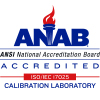
What started as a plan developed by a team of food scientists in the late 1950s has gradually developed into one of the most prestigious food and safety management systems in the world.
HACCP, also known as Hazard Analysis and Critical Control Point, is defined as a standardized practice that identifies assessment of risk, hazard identification, and control. In simpler terms, it is a strategic plan used by facilities in the food industry which validates food that is cooked, served, and consumed is safe to eat.
Early Establishment
A collaborative development implemented by The Pillsbury Company, the United States Army, and NASA, HACCP was initially intended to produce safe foods for the United States space program. NASA wanted to ensure the safety of the food that astronauts would consume in space by creating a risk-based system, preventing any error in the production of food being sent to space.
After the success of the space program testing, Pillsbury initiated the same testing into their method of food production in response to contamination outbreaks and recalls.
In 1971, Pillsbury attended the National Conference on Food Protection. After presenting their findings and examining their critical hazards using the HACCP method, the Food and Drug Administration (FDA), proposed a similar testing and training program for FDA food inspectors. The creation of these testings were the basic foundation for the HACCP food safety management system.
Expansion in the Industry
Between the 1980s and 1990s, the HACCP plan continued to grow significantly within the food industry. Toward the end of the 1980s, several food and safety publications made it a priority to include HACCP as the predominant food safety system. Many publications describe the HACCP plan as the most effective method to ensure the safety of the U.S. food supply.
In 1993, the National Advisory Committee on Microbiological Criteria for Foods (NACMCF) revised the guidance standards, adding the five preliminary steps and seven current principles of HACCP. This information provided significant input into the hazard analysis process.
Current HACCP Practice
In 1998, it became a requirement for all food businesses to obtain a food and safety certification under HACCP guidelines with the exception of smaller businesses not having to comply with the regulations. Today, training for the advancement of the HACCP system is offered by several food safety firms such as The American Society for Quality, who has developed HACCP Auditor Certification training to ensure food professionals understand the specific standards and principles.
While food safety is still evolving, it is expected to further improve in regard to food processing and delivery to consumers in the international marketplace. To view MadgeTech’s line of data loggers that ensure HACCP standards, click here!
Click here, to see the HACCP Timeline!






